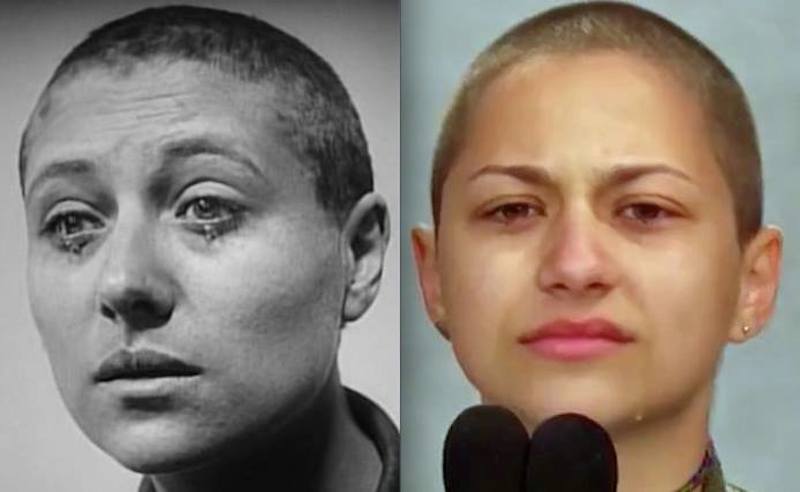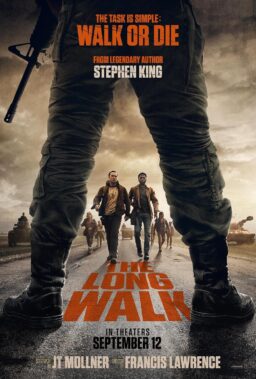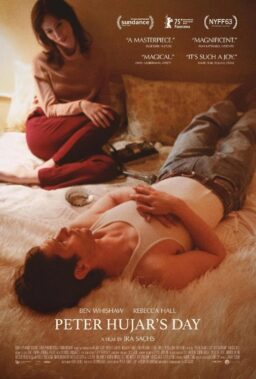Thumbnails is a roundup of brief excerpts to introduce you to articles from other websites that we found interesting and exciting. We provide links to the original sources for you to read in their entirety.—Chaz Ebert
1.
“Joan of Arc and the Passion of Emma González“: Brilliant commentary from The New Yorker‘s Rebecca Mead.
“In its restraint, its symbolism, and its palpable emotion, González’s silence was a remarkable piece of political expression. Her appearance also offered an uncanny echo of one of the most indelible performances in the history of cinema: that of Renée Maria Falconetti, who starred in Carl Theodor Dreyer’s classic silent film from 1928, ‘The Passion of Joan of Arc.’ Based upon the transcript of Joan of Arc’s trial, in 1431, Dreyer’s film shows Joan as an otherworldly young woman—she is nineteen, to the best of her limited knowledge—who, in the face of a barrage of questioning by hostile, older, powerful clerics, is simultaneously self-contained and brimming over with emotion. Falconetti, who never made another movie, gives an extraordinary performance, her face registering at different moments rapture, fear, defiance, and transcendence. Joan’s defense in the face of her inquisitors is largely mute: when she is asked to describe Saint Michael—who, she blasphemously claims, has appeared to her—she mostly refrains from verbal response, her silence bespeaking holy understanding greater than theirs. In the final phase of her life, when Joan knows that she is to be martyred, Dreyer’s camera lingers on closeups of Falconetti, with her brutally close-cropped hair, her rough garments, and her anguished silence. Her extraordinary image in that sequence could be intercut almost seamlessly with footage from Saturday’s rally.”
2.

“Elizabeth Wood on ‘White Girl’“: The writer/director chats with me at Indie Outlook about her stunning first solo feature filmmaking effort.
“I think it’s important to cross certain lines in terms of how comfortable you are in order to get the performance. That’s what is so vulnerable and so difficult about being an actor. I don’t think I could do it. Being able to facilitate an experience in a room with people where they are comfortable enough and safe enough to cross a line and do something that feels gross, uncomfortable and ‘too far’ is important to the kind of films that I want to make. At the same time, the actors must feel very safe. I am always aware and in tune to what they are experiencing, to where we are talking about every sensation of where they are being touched, what’s considered ‘okay’ and choreographing that with the actors. I’ll ask, ‘Are you okay if you are touched here, and with what layers in between?’ My actors and I go over every element of the scene, and the more we talk about it, and also the more we joke about it, the more okay it’s going to be. I want to cross lines, but in a way where everyone knows that lines were crossed intentionally and that we are all on the same page while creating something together. That takes a lot of trust and a lot of talk ahead of time in rehearsal, as well as someone like myself who is very sensitive to that and aware of that. You need someone who isn’t going to play tricks on anyone. Little tricks are okay, but not big tricks. [laughs]”
3.

“A Driverless Future Threatens the Laws of Real Estate“: An unsettling new report from Jack Sidders and Jess Shankleman at Bloomberg.
“The link between property and transport has been perhaps the most durable in human history. Since the ancients, few things have delivered higher land values with more certainty than advances in transport, from roads to canals, railways to highways. It’s still ‘a no-brainer’ in the 21st century, says Bridget Buxton. She bought a fixer-upper with her husband in a scruffy part of east London in 2016 because it’s a short walk to the high-speed crosstown rail line due to open this year. Prices are up 90 percent in the past five years for homes like hers, far outpacing the whole city. But now, the dawn of the driverless car—promising a utopia of stress-free commutes, urban playgrounds and the end of parking hassles—threatens to complicate the calculus for anyone buying property.’Real estate might be the industry that is most transformed by autonomous vehicles,’ said David Silver, who teaches self-driving engineering at Udacity Inc., an online university that has enrolled more than 10,000 students who want in on the transport of the future. ‘It could change real estate from a business that is all about location, location, location.’”
4.

“The ‘universal adversarial preturbation’ undetectably alters images so AI can’t recognize them“: An enlightening post from Cory Doctorow at Boing Boing.
“In a newly revised paper in Computer Vision and Pattern Recognition, a group of French and Swiss computer science researchers show that ‘a very small perturbation vector that causes natural images to be misclassified with high probability’—that is, a minor image transformation can beat machine learning systems nearly every time. What’s more, the researchers show evidence that similar tiny distortions exist in other kinds of data-types that confound all machine-learning systems! The ‘universal adversarial preturbation’ changes images in ways that are imperceptible to the human eye, but devastating to machine vision. The research is typical of the early phases of computer science breakthroughs that demonstrate incredible results in classifying systems that no one is trying to game. Think of when Google figured out that the links between webpages—only ever made as an expression of interest—could be used to classify the importance of web-pages, only to kick of an arms race as attackers of the system figured out that they could get high rankings with easy-to-maintain linkfarms. The same thing happened when stylometry begat adversarial stylometry. All of success in using deep learning classification to identify people, or catch cheaters, has assumed that the other side never deploys any countermeasures. This paper suggests that such countermeasures are trivial to generate and devastating in practice.”
5.

“The Next Great Action Director is Working in Television—and She’s a Woman“: The Talkhouse‘s Jim Hemphill champions the talents of Stacey K. Black.
“The best piece of action filmmaking I saw this month wasn’t ‘Black Panther’ or the new ‘Tomb Raider’ – in fact, it wasn’t on the big screen at all. It was the “The Last Mile” episode of ‘NCIS: New Orleans’ (above), in which director Stacey K. Black takes Chad Gomez Creasey’s propulsive script about a series of truck heists and turns it into an hour-long master class in how to create tension and excitement with the camera. The episode opens with a beautifully directed pursuit that earns comparison with the classic car chases of ‘Bullitt’ and ‘The French Connection’ and climaxes with an equally dynamic set piece in which intersecting lines of action build to an exhilarating, jaw-dropping payoff – a spectacularly visceral stunt that Black stages for maximum impact. In between, Black proves to be as accomplished at intimate moments of combat in tight spaces as she is at large-scale spectacle, and as sensitive with her actors as she is aggressive with her kinetic fight scenes. It’s the kind of direction that used to be more frequent when filmmakers like Walter Hill, John Badham and Richard Donner were each cranking out a movie every year or two. These days it’s a lot rarer, which makes Black’s talent all the more valuable and worthy of attention.”
Image of the Day

One of the most enticing independent films currently seeking funding on Seed & Spark is “Rendezvous in Chicago,” the latest picture from acclaimed director Michael Glover Smith (“Cool Apocalypse,” “Mercury in Retrograde”). You can find the full details about the film’s crowdfunding campaign here.
Video of the Day
<span id=”selection-marker-1″ class=”redactor-selection-marker”></span>
YouTuber LilyCRead’s scathing takedown of Stephanie Perkins’ popular young adult book, Anna and the French Kiss, is one of the best and funniest reviews I’ve ever seen. Click here to go to Lily’s YouTube channel, where she is currently reading the Harry Potter series for the first time.












